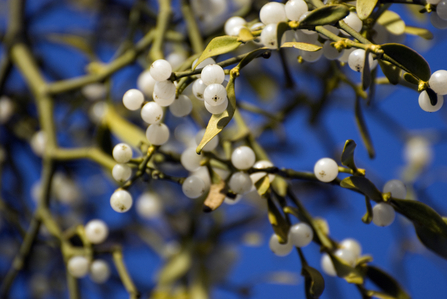You're most likely familiar with the romantic Christmas tradition of kissing under the mistletoe. The tradition itself is another that dates back to pre-Christian days, with much dispute as to its specific origins. It also features in Druidic, Norse and Greek mythologies and has wide-ranging relevance to many cultures.
In Norse mythology, mistletoe was the only weapon that could be used to kill the god Baldur the Beautiful, orchestrated by the mischievous god Loki. In Greek myth, it allowed the hero Aeneas to visit his father in the abode of the dead. In Druidry, it is used in ceremonies and, in the past, for medicine. The tradition of kissing under the mistletoe is linked with mistletoe being a symbol of fertility.
Long-standing and romantic as the tradition may be, those who find themselves under this iconic symbol of love might not know that it's actually a hemiparasite that grows on the branches of other trees, tapping into their nutrients to survive.
A hemiparasite is a plant which gets some or all of its food from parasitism. Mistletoe gets food from its host but also uses photosynthesis to survive.
To spread from tree to tree, mistletoe cleverly offers up its berries to birds. The seeds within the berries are coated in a sticky goo, so when the bird moves on and wipes its beak on the next tree, a seed or two is often left behind, glued in place.
With this in mind, you'd be forgiven for thinking that the appeal of mistletoe is entirely misplaced, but don't write it off yet. It actually plays a bigger, more natural role than just being a seasonally romantic sprig.


